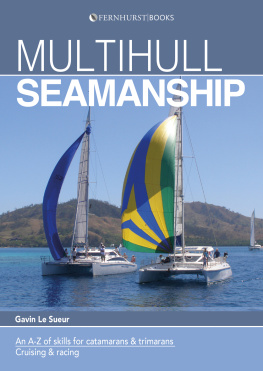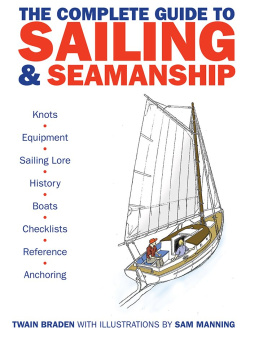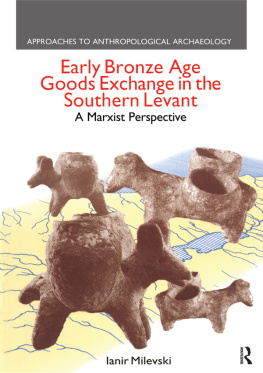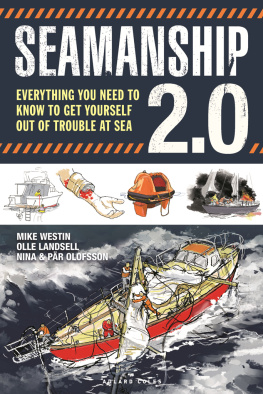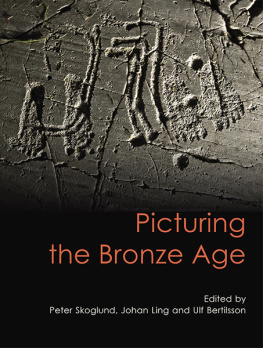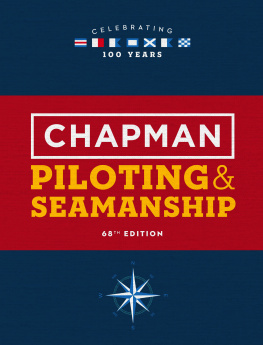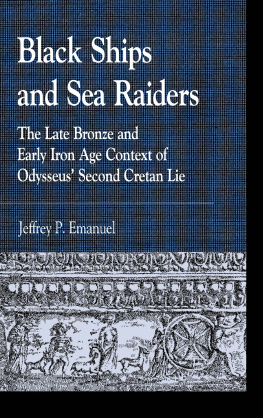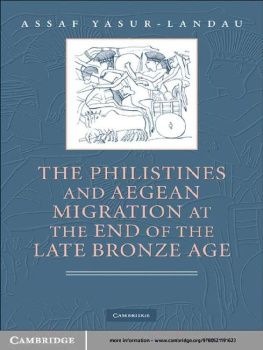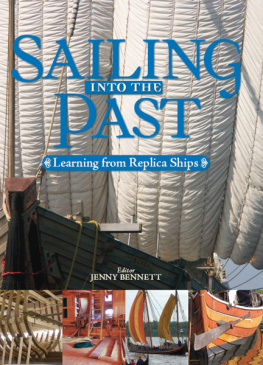Shelley Wachsmann - Seagoing Ships in the & Seamanship Bronze Age Levant
Here you can read online Shelley Wachsmann - Seagoing Ships in the & Seamanship Bronze Age Levant full text of the book (entire story) in english for free. Download pdf and epub, get meaning, cover and reviews about this ebook. year: 1998, publisher: Texas A&M University Press, genre: Home and family. Description of the work, (preface) as well as reviews are available. Best literature library LitArk.com created for fans of good reading and offers a wide selection of genres:
Romance novel
Science fiction
Adventure
Detective
Science
History
Home and family
Prose
Art
Politics
Computer
Non-fiction
Religion
Business
Children
Humor
Choose a favorite category and find really read worthwhile books. Enjoy immersion in the world of imagination, feel the emotions of the characters or learn something new for yourself, make an fascinating discovery.

- Book:Seagoing Ships in the & Seamanship Bronze Age Levant
- Author:
- Publisher:Texas A&M University Press
- Genre:
- Year:1998
- Rating:3 / 5
- Favourites:Add to favourites
- Your mark:
- 60
- 1
- 2
- 3
- 4
- 5
Seagoing Ships in the & Seamanship Bronze Age Levant: summary, description and annotation
We offer to read an annotation, description, summary or preface (depends on what the author of the book "Seagoing Ships in the & Seamanship Bronze Age Levant" wrote himself). If you haven't found the necessary information about the book — write in the comments, we will try to find it.
Seagoing Ships in the & Seamanship Bronze Age Levant — read online for free the complete book (whole text) full work
Below is the text of the book, divided by pages. System saving the place of the last page read, allows you to conveniently read the book "Seagoing Ships in the & Seamanship Bronze Age Levant" online for free, without having to search again every time where you left off. Put a bookmark, and you can go to the page where you finished reading at any time.
Font size:
Interval:
Bookmark:
Seagoing Ships & Seamanship in the Bronze Age Levant

ED RACHAL FOUNDATION NAUTICAL ARCHAEOLOGY SERIES

Seagoing Ships in the & Seamanship Bronze Age Levant
SHELLEY WACHSMANN
Foreword by George F. Bass
Texas A&M University Press
COLLEGE STATION
Copyright 1998 by Shelley Wachsmann
Manufactured in the United States of America
All rights reserved
Third printing, 2018
The paper used in this book meets the minimum requirements of the American National Standard for Permanence of Paper for Printed Library Materials, Z39.48-1984. Binding materials have been chosen for durability.

The publication of this book was made possible in part by the generous support of The Institute for Aegean Prehistory and The George O. Yamini Family Chair in Liberal Arts at Texas A&M University.
: Bird-head post ornament, with legs of a man standing on it, all that remains of a Sea Peoples ship painted on Late Helladic IIIC 1b sherd found at Ashkelon (photo by V. Bryant; courtesy of L. E. Stager and the Leon Levy Expedition to Ashkelon)
Library of Congress Cataloging-in-Publication Data
Wachsmann, Shelley.
Seagoing ships and seamanship in the Bronze Age Levant / Shelley Wachsmann.
p. cm. (Ed Rachal Foundation Nautical Archaeology Series) Includes bibliographical references and index.
1. Mediterranean RegionAntiquities. 2. Underwater archaelogyMediterranean Region. 3. Bronze ageMediterranean Region. 4. Seafaring lifeMediterranean Region. 5. Ships, AncientMediterranean Region. I. Title.
DE61.S43W33 1997 96-49815
910'9163'80901dc21 CIP
ISBN 13: 978-0-89096-709-6 (cloth)
ISBN 13: 978-1-60344-080-6 (pbk.)
ISBN 13: 978-1-62349-700-2 (ebook)
For Yonatan & Yishai
Some went down to the sea in ships,
doing business on the great waters;
They saw the deeds of the Lord,
His wondrous works in the deep.
PSALMS 107: 2324
CONTENTS
, by George F. Bass
by J. R. Lenz
by F. M. Hocker
, by J. Hoftijzer and W. H. van Soldt
, by F. M. Hocker
FOREWORD
It was only with watercraft that ancient peoples could discover, explore, colonize, and supply the once uninhabited islands of the eastern Mediterranean, and it was mainly with watercraft that ancient peoples of the bordering African, Asian, and European coasts acquired the raw materialsespecially metals and timberthat allowed the rise of Bronze Age civilizations in the Levant.
Of course there were overland caravans and inland caravan cities, but one can scarcely imagine huge cedar logs being hauled overland from Lebanon to the Nile valley or tons of copper and tin being carted from the East across Anatolia to Greece, even had there been a bridge over the Bosporus. It was on the waters of the Red Sea, not across desert and through jungle, that Egyptians sent expeditions to Punt to bring back the exotic goods of tropical Africa.
Maritime commerce turned the eastern littoral of the Mediterranean into a bustling, cosmopolitan entrept. Ships sailed from the harbors of Ugarit, Sidon, Tyre, Ashkelon, and Dor, transporting metals, ceramics, resins, and spices southward to Egypt and westward to the Aegean, some at least as far west as Sardinia. The role of Cyprus within this economic sphere has not yet been determined, but it must have been considerable.
The long-distance exchange of goods and ideas by sea was not always peaceful. We cannot imagine Mycenaean Greeks without the knowledge of writing and art they obtained by naval conquest from the Minoans of Crete. And Mycenaean troops did not march but sailed to Troy. Even the end of the Bronze Age in the eastern Mediterranean was marked by destruction wrought along the Syro-Canaanite coast and on Cyprus by raiding Sea Peoples.
Scholarly interest in the ships and boats of these events has not been lacking. But when I, as a young assistant professor, first offered a graduate seminar on ancient seafaring at the University of Pennsylvania in the middle 1960s, there were few general references to which my students and I could turn for the study of early Near Eastern and Aegean watercraft. M. G. A. Reisners Models of Ships and Boats (Catalogue gnral des antiquits gyptiennes du Muse du Caire) had appeared in 1913, and from the mid 1920s there were M. C. Boreuxs tudes de nautique gyptienne and August Ksters Das antike Seewesen and Schiffhrt und Handelsverkehr des stlichen Mittlemeeres in 3. und 2. Jahrtausund v. Chr. For pre-Classical ships we read Spyridon Marinatoss La marine crto-mycnienne in the Bulletin de correspondance hellnique (1933) and G. Kirks Ships on Geometric Vases, in the Bulletin of the British School of Archaeology at Athens (1949).
More generally, we could consult a few pages each in R. and R. C. Andersons The Sailing Ship: Six Thousand Years of History (1963), James Hornells Water Transport: Origins and Early Evolution (1946), Bjrn Landstrms beautiful but speculative The Ship (1961), and the splendid but popular Illustrated History of Ships and Boats and The Ancient Mariners, both by Lionel Casson.
Mostly, however, we had to seek out depictions and ancient written records on our own, slowly building up a bibliography of several hundred titles, carrying heavy armloads of books from the library to the seminar room, each tome often containing but one relevant illustration of an Egyptian painting or relief or model. Working with such primary sources is essential, but we lacked handbooks like those that had proved so useful to me in learning the basics and bibliographies of subjects I had only recently studiedbooks like William Dinsmoors The Architecture of Ancient Greece, Gisela Richters The Sculpture and Sculptors of the Greeks, or the many comprehensive works on vase painting and coins.
Since that early and perhaps unique seminar on ancient seafaring, the study of ancient ships has expanded rapidly, largely because of the new field of nautical archaeology that reveals ancient ships themselves, both on land and underwater. Graduate programs in nautical archaeology are springing up around the world, with a growing number of undergraduate introductory courses on the history of ships being offered at various universities.
Publications have kept pace. Specialized periodicals, the English International Journal of Nautical Archaeology since 1972 and the French Archaeonautica since 1977, are now devoted solely to the archaeology of ships and harbors, with proceedings of conferences on those subjects published regularly from Australia to India to the Americas. Of special interest to scholars of the early Aegean are those entitled Tropis, published by the Institut Hellnique pour la Prservation de la Tradition Nautique. Small wonder that 75 percent of the nearly thousand references Shelley Wachsmann has listed in this book have appeared in the three decades since my first seminar.
For the Classical period, especially, there are now three outstanding reference works: Lionel Cassons Ships and Seamanship in the Ancient World (1971), J. S. Morrison and R. T. Williamss Greek Oared Ship: 900300 B.C. (1968), and Lucien Baschs Le muse imaginaire de la marine antique (1987). These touch on Bronze Age seafaring, as do Marie-Christine de Graeves
Next pageFont size:
Interval:
Bookmark:
Similar books «Seagoing Ships in the & Seamanship Bronze Age Levant»
Look at similar books to Seagoing Ships in the & Seamanship Bronze Age Levant. We have selected literature similar in name and meaning in the hope of providing readers with more options to find new, interesting, not yet read works.
Discussion, reviews of the book Seagoing Ships in the & Seamanship Bronze Age Levant and just readers' own opinions. Leave your comments, write what you think about the work, its meaning or the main characters. Specify what exactly you liked and what you didn't like, and why you think so.


